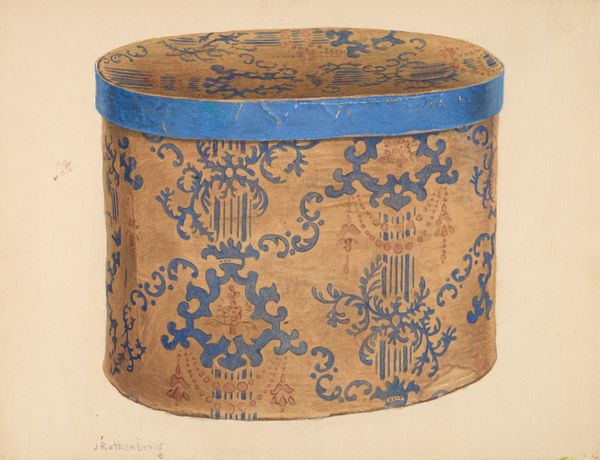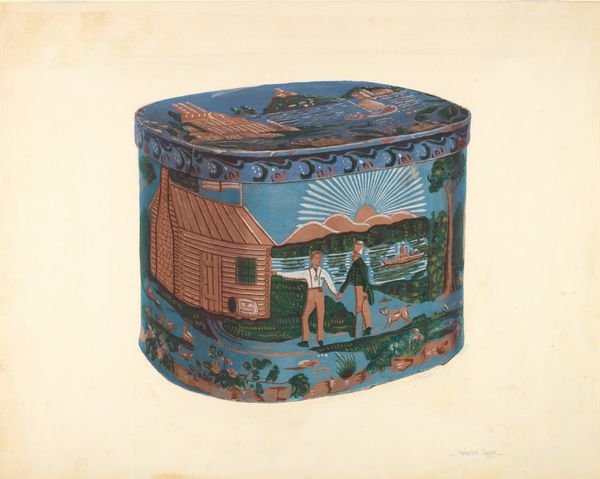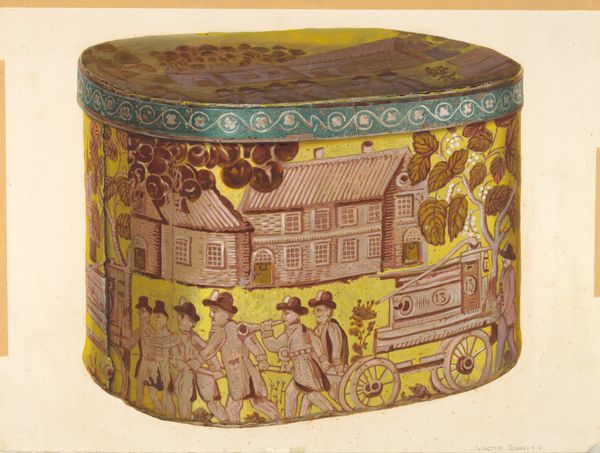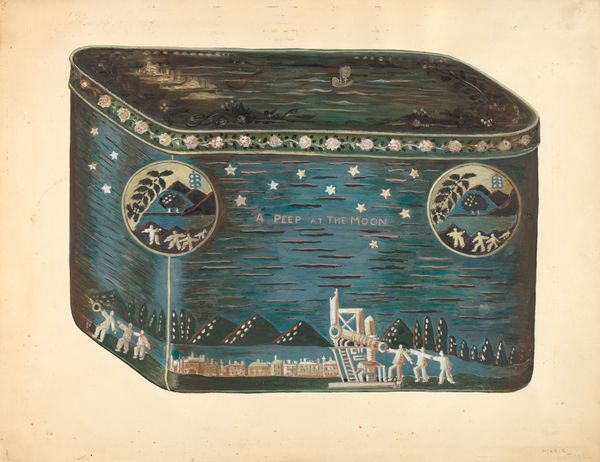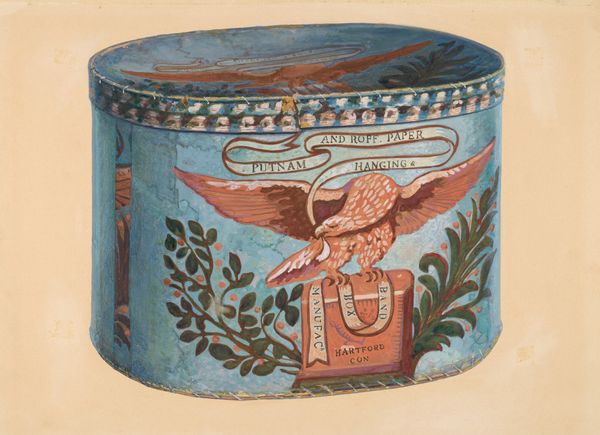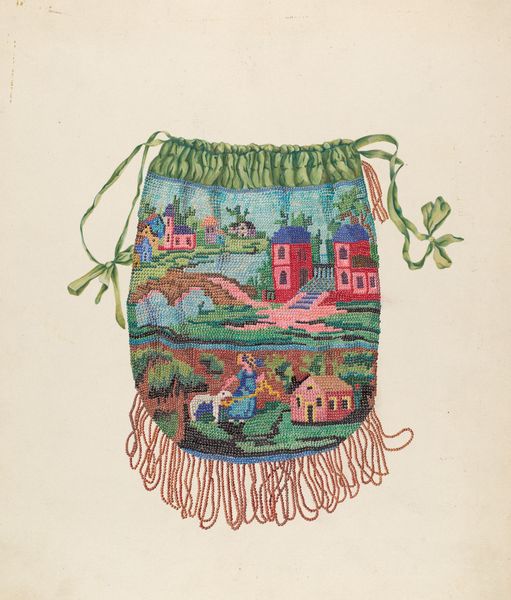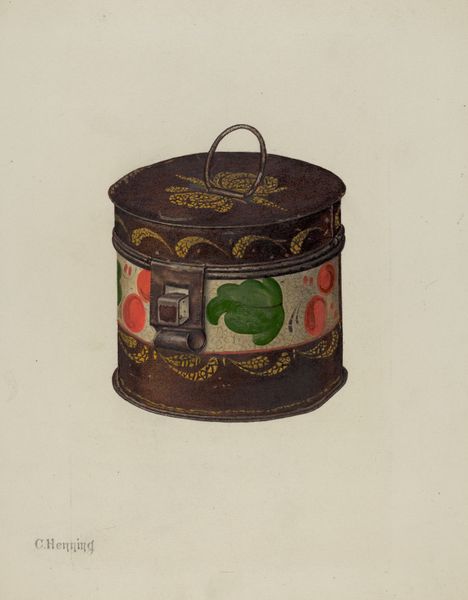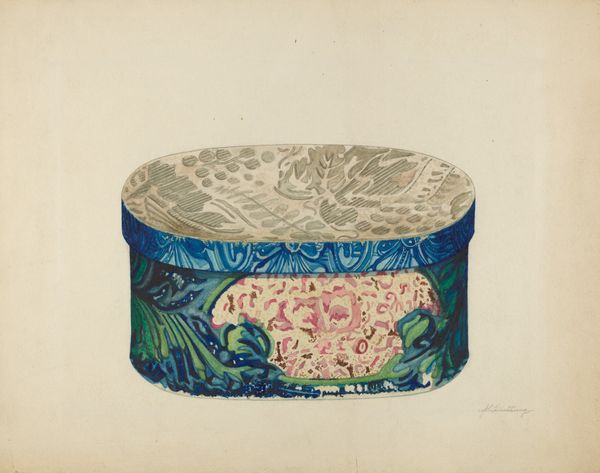
drawing, coloured-pencil, watercolor
#
drawing
#
coloured-pencil
#
water colours
#
landscape
#
watercolor
#
coloured pencil
#
decorative-art
#
decorative art
#
watercolor
Dimensions: overall: 53.1 x 39 cm (20 7/8 x 15 3/8 in.) Original IAD Object: 13 1/4" high; 19 1/2" long; 15 3/4" wide
Copyright: National Gallery of Art: CC0 1.0
Curator: So, here we have Alfred Koehn's "Bandbox Design," likely created between 1935 and 1942, using watercolor and coloured pencil. What strikes you most about this piece? Editor: It's so whimsical! The colour palette, that bright blue, gives it an airy feeling. And it is interesting the material; what exactly is a “bandbox?” How do you look at an image like this? Curator: For me, understanding the 'bandbox' itself is crucial. These were lightweight containers, often made of cardboard or wood, used for transporting hats and accessories. So, this isn’t “high art,” initially – it’s a design for something meant for mass production, a container for commercial use. The artist then becomes a designer, mediating between aesthetic aspiration and material constraints. What does the imagery suggest about the potential consumer? Editor: Good point! I hadn't considered the commercial aspect so deeply. Maybe the idyllic scenes and that hot air balloon implied upward mobility? The Clayton Ascent! So the aesthetic of something traditionally deemed functional reflects social mobility of the target user? Curator: Exactly. Koehn uses a pre-existing art, watercolour, in a new way. It also appears this "decorative art" utilizes landscape scenes. But look at the repeated motifs and simplified forms - this isn't a finely rendered landscape painting intended for display. It is schematic, designed to be reproduced, pointing toward the industrial processes underpinning consumption and our own reading of it here today as “art.” Do you see those sorts of influences? Editor: Definitely! I initially missed those elements of reproduction that you pointed out. Seeing it as a material object first really shifts my perspective. Thanks so much! Curator: Absolutely! Thinking about art through the lens of material production and consumption always offers new insights.
Comments
No comments
Be the first to comment and join the conversation on the ultimate creative platform.
